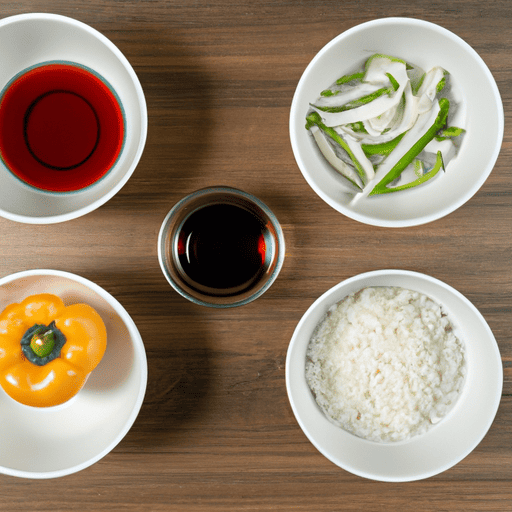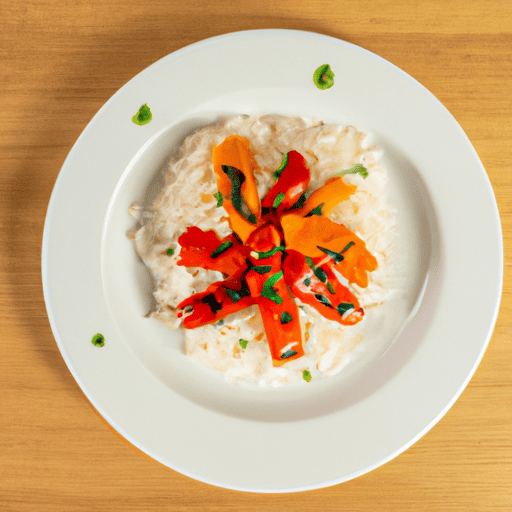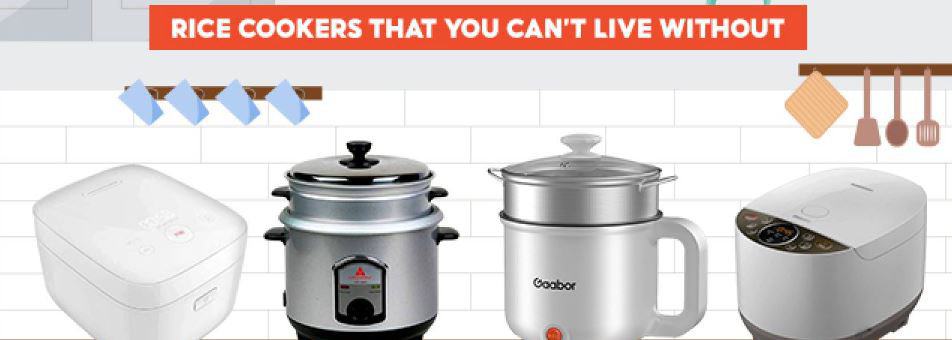Hello and welcome to Rice Cookers 101! Today we will be featuring a delicious and healthy Japanese Bell Pepper Rice recipe that is sure to delight your taste buds. This recipe is packed with flavors and nutrients, making it a perfect meal for anyone looking for a quick and easy way to get their daily dose of veggies and grains. With just a few simple ingredients and a rice cooker, you can whip up this tasty meal in no time. So, let’s get cooking! We’ve made this japanese bell pepper rice recipe easy to follow 👨🍳. If you’re looking for our favorite rice cookers to make this recipe, check out our list of top rice cookers here.

Ingredients
- 2 bell peppers, any color, sliced into thin strips
- 1/2 onion, chopped
- 2 cups cooked rice
- 4 tbsp soy sauce
- 2 tbsp sake or white wine
- 1 tbsp sugar
- 1 tbsp vegetable oil
- 1 tbsp sesame oil
- Salt and pepper to taste
Instructions
- Heat a large skillet over medium heat. Add 1 tbsp of vegetable oil and 1 tbsp of sesame oil to the skillet.
- When the skillet is hot, add 2 sliced bell peppers and 1/2 chopped onion to the skillet. Stir fry for 3-4 minutes until the vegetables start to soften.
- In a small bowl mix together 4 tbsp of soy sauce, 2 tbsp of sake or white wine, and 1 tbsp of sugar.
- Add 2 cups of cooked rice to the skillet and mix it in with the vegetables.
- Pour the sauce over the rice and stir everything together so that the rice is seasoned with the sauce.
- Keep stirring the rice for about 2-3 minutes until everything is heated through and the sauce has been absorbed by the rice.
- Season the rice with salt and pepper to taste.
- Serve and enjoy your Japanese bell pepper rice!

How long does japanese bell pepper rice last in the fridge?
Japanese bell pepper rice should be stored in an airtight container in the fridge and can be kept for up to four days after cooking. It’s important to let the rice cool down completely before storing it in the fridge to avoid bacteria growth. To reheat the rice, you can put it in the microwave or on the stovetop with a little bit of water or broth to prevent it from becoming dry. Always make sure to taste the rice before eating it to ensure it’s still fresh and safe to consume. If the rice smells or tastes off, it’s best to discard it.
Low calorie japanese bell pepper rice recipe substitutions
To make this Japanese bell pepper rice recipe lower in calories, there are a few substitutions that can be made. Firstly, reduce the amount of vegetable oil and sesame oil used or replace it with a low-calorie cooking spray to cut down on the overall fat content. Swap out white rice for brown rice or cauliflower rice, which are both complex carbohydrates that are lower in calories. Alternatively, use a mix of half rice and half quinoa to further decrease the calorie count. Also, replace the sugar with a low-calorie sweetener or skip it altogether as the dish already has naturally sweet bell peppers. Finally, increase the amount of vegetables used and decrease the amount of rice to compensate, providing a more fiber-rich meal without adding too many calories. With these substitutions, the dish will be lighter, healthier, and still, retain the delicious flavors of the original recipe.
What to serve with a japanese bell pepper rice?
There are several options that would complement Japanese bell pepper rice. A simple miso soup would add to the Japanese flavour profile. A side of edamame or some vegetable tempura would add texture and colour to the meal. Grilled chicken or tofu would make the meal more substantial and add a source of protein. Finally, a side of pickled vegetables or a light cucumber salad would provide a refreshing contrast to the warm and savoury rice dish.
Whats the best sauce for a japanese bell pepper rice?
The best sauce for Japanese bell pepper rice would be a savory and slightly sweet teriyaki sauce. This sauce is made with soy sauce, mirin, sake, sugar, and often includes additional ingredients like ginger or garlic. The sweetness of the teriyaki sauce complements the bell pepper’s natural sweetness, while the savory umami flavors enhance the taste of the rice. To make the sauce, simply combine all the ingredients in a pot and simmer until it thickens, then drizzle it over the rice and bell peppers before serving. Enjoy!
Japanese bell pepper rice health benefits
Japanese bell pepper rice has several health benefits. Bell peppers are a good source of vitamin C, vitamin A, folate, and fiber. Vitamin C helps boost immunity, while vitamin A is important for healthy eyes and skin. Folate is vital for healthy fetal development and may also reduce the risk of depression and memory loss. Additionally, the fiber in bell peppers aids in digestion and helps keep you feeling full. Rice is a good source of carbohydrates, which provide energy, and also contains small amounts of vitamins and minerals. Together, Japanese bell pepper rice is a nutritious and healthy meal option.

